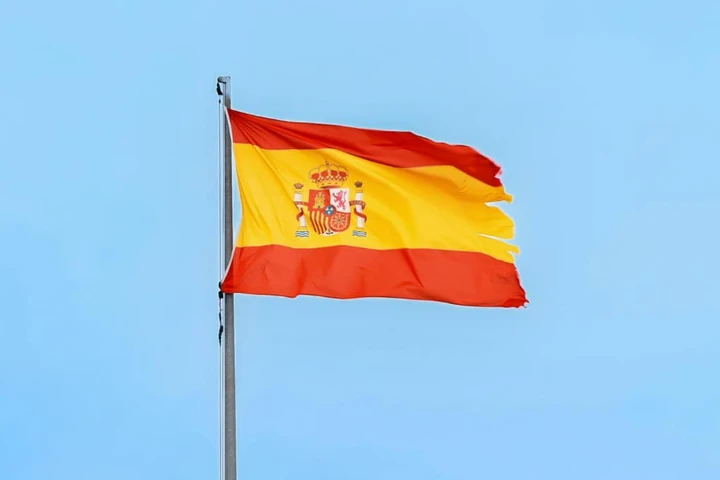Spain
Spain Guide du pays

Spain is a vibrant and captivating country located in southwestern Europe, renowned for its rich cultural heritage, stunning landscapes, and passionate people. With a history spanning millennia, Spain boasts a mesmerizing blend of ancient traditions and modern innovation. From the architectural marvels of Barcelona to the enchanting beaches of the Mediterranean coast, every corner of this enchanting nation offers a unique and unforgettable experience.
Spain has diverse cultures each region has its character and culture. From the soulful flamenco rhythms of Andalusia to the vibrant festivals of Valencia, the country is a melting pot of traditions, languages, and art forms. Visitors marvel at the architectural wonders of Antoni Gaudí in Barcelona, the awe-inspiring Alhambra in Granada, and the historic charm of Madrid's Plaza Mayor.
Beyond its cultural richness, Spain is also a paradise for nature enthusiasts. The rugged peaks of the Pyrenees offer breathtaking hiking trails, while the golden sands of the Costa del Sol invite sunseekers from around the world. From the verdant valleys of the Basque Country to the majestic landscapes of the Canary Islands, Spain's natural splendor is simply enchanting.
| City Name | Best For | Best Attractions | Average Trip Cost |
|---|---|---|---|
| Madrid | Art Culture Nightlife | Prado Museum Royal Palace El Retiro Park | $100-200 per day |
| Barcelona | Architecture Beaches Cuisine | La Sagrada Familia Las Ramblas Park Güell | $120-250 per day |
| Seville | Moorish architecture Flamenco Festivals | The Alcázar Seville Cathedral Plaza de España | $80-150 per day |
| Granada | Alhambra Moorish heritage Scenic views | Alhambra Albayzin neighborhood Sierra Nevada | $70-120 per day |
| Valencia | Modern architecture Beaches Cuisine | City of Arts and Sciences La Lonja Mercado Central | $90-180 per day |
The Most Popular Tourist Attractions in Spain
Here's the list of top Spain attractions you should see during your visit:
- Sagrada Familia, Barcelona: A stunning basilica designed by Antoni Gaudí, known for its intricate facades and towering spires.
- Alhambra, Granada: A palace and fortress complex built during the Moorish occupation of Spain, featuring stunning Islamic architecture and gardens.
- The Royal Palace, Madrid: The official residence of the Spanish royal family, featuring opulent interiors and a vast collection of art and artifacts.
- Seville Cathedral: A Gothic cathedral built on the site of a former mosque, featuring the tomb of Christopher Columbus and the Giralda bell tower.
- Park Güell, Barcelona: A whimsical park designed by Antoni Gaudí, featuring colorful mosaics, sculptures, and panoramic views of the city.
- Mezquita of Cordoba: A former mosque turned cathedral, featuring a stunning mix of Islamic and Christian architecture and a forest of columns.
- El Escorial, Madrid: A vast complex of palaces, monasteries, and mausoleums built by King Philip II, featuring a library and art collection.
- Aqueduct of Segovia: A Roman aqueduct built in the 1st century AD, featuring 167 arches and spanning over 800 meters.
- Guggenheim Museum, Bilbao: A modern art museum designed by Frank Gehry, featuring a striking titanium-clad exterior and a collection of contemporary art.
- Avila Walls: A medieval fortress town surrounded by 2.5 kilometers of well-preserved walls, featuring numerous towers and gates.
- Plaza de España, Seville: A grand square built for the 1929 World's Fair, featuring a canal, fountains, and colorful tilework.
- Casa Milà (La Pedrera), Barcelona: A modernist apartment building designed by Antoni Gaudí, featuring a sculptural rooftop and a museum of Gaudí's work.
Where is Spain?
Spain is a country located in Southwestern Europe, with parts of its territory in the Atlantic Ocean, the Mediterranean Sea, and Africa. Spain is an intercontinental country, as it borders Morocco in Africa, making it the only country in continental Europe to share a boundary with an African country.
Time Zone of Spain
Spain has two time zones. The majority of the country, including the capital Madrid, is in the Central European Time (CET) zone, which is UTC+ 01:00. However, during the summer months, it switches to Central European Summer (CEST), which is UTC+02:00, the Canary Islands, located off the northwest coast of Africa, are in the Western European Time (WET) zone, which is UTC±00:00, and during the summer, they switch to Western European Summer Time (WEST), which is UTC+01:00.
The Capital of Spain
The capital of Spain is Madrid. It is a vibrant and cosmopolitan city that serves as the country’s political, economic, and cultural center. The population of the city is approximately 7 million, making it the second-largest city in the European Union.
Spain Flag
The flag of Spain consists of three horizontal stripes: red at the top and bottom, and yellow in the middle. The coat of arms includes the Pillars of Hercules, a crown, and the royal crown. The red and yellow colors are said to back to the 18th century and are thought to be based on the heraldic colors of the original Spanish kingdoms.
What Languages Are Spoken in Spain?
Spain has four official languages recognized: Castilian Spanish, Catalan, Basque (Euskera), and Galician. Castilian Spanish is the most widely spoken language in Spain, with about 86% of the population speaking it as their mother tongue.
Official Spain Currency
Spain’s official currency is the Euro (EUR).
Is Spain Expensive for Tourists?
Spain is not an expensive country for visitors, especially when compared to North America. Spain is considered one of the cheapest countries in Western Europe.
The Population of Spain
Spain’s population is approximately 47 million. The largest groups of foreigners are those of Moroccan, Romanian, British, Chinese, and Italian citizenship.
The Safety of Traveling to Spain
Spain is generally considered a safe country for tourists, with a relatively low crime rate compared to other European countries. However, travelers should be aware of common risks, such as petty theft, particularly in busy tourist areas and on public transportation.
Weird Laws in Spain
- Forbidden Names: In Spain, it is forbidden to name a child Cain, Judas, or Lenin.
- No Playing Dominoes Outdoors: In Seville, playing dominoes outdoors is strictly prohibited as it violates noise pollution regulations.
- No Mops on Balconies: In Villanueva de la Torre, it is illegal to dry a mop on a balcony or any items of laundry hanging out to air in the sun.
- No Begging with a Dog: Beggars are not allowed to be accompanied by dogs in Spain, as it is considered a form of animal abuse.
- No Singing in the Street: In the city of Zamora, it is prohibited to sing in the street, as it is considered vandalism.
- No Underwear on Balconies: In Seville, it is not allowed to hang underwear out to dry on balconies, as it is seen as offensive.
- No Rice Throwing at Weddings: The city of Cádiz banned the traditional custom of throwing rice at weddings to prevent injuries and to stop local birds from creating a mess
Religion in Spanish
With approximately 68.5% of the population identifying as Catholic. Other religions in Spain include Judaism, Islam, and Protestantism.


